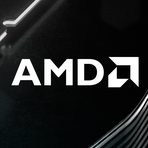The Power of Simplicity: Exploring nvtop and Memtest86+
November 13, 2024, 9:49 pm

Location: United States, California, San Francisco
Employees: 1001-5000
Founded date: 2008
Total raised: $350M
In the vast ocean of software tools, simplicity often gets lost in the waves of complexity. Yet, two recent releases—nvtop and Memtest86+—shine like beacons of clarity. They embody the essence of what users crave: efficiency and ease of use. Let’s dive into these tools and discover how they redefine monitoring and testing in the tech landscape.
Imagine a world where monitoring your GPU is as easy as breathing. Enter nvtop, a console-based tool that revolutionizes how we observe graphics card performance. In a realm often cluttered with cumbersome GUIs and endless dependencies, nvtop stands out like a lighthouse guiding lost ships home.
The beauty of nvtop lies in its simplicity. With a single command, users can install it on Arch-based distributions. No more wrestling with AUR or compiling from source. Just type `sudo pacman -S nvtop` and voilà! You’re ready to monitor your GPU.
But what exactly is nvtop? It’s not just another NVIDIA utility. The “N” in nvtop stands for “Neat.” This tool provides a clean, unified interface for monitoring all types of GPUs—from ancient Intel integrated graphics to the latest AMD and NVIDIA powerhouses. It’s like having a Swiss Army knife for your graphics card.
In a world where graphical monitoring tools often consume more resources than they report, nvtop is a breath of fresh air. It’s lightweight, efficient, and doesn’t hog system resources. Imagine a doctor who treats a cold without catching the flu themselves. That’s nvtop—monitoring without the overhead.
The interface is user-friendly. It displays real-time GPU load, memory usage, and power consumption in a single terminal window. No more hunting through menus or deciphering complex graphs. Everything you need is right there, clear as day. This is especially useful for developers and data scientists who need to keep an eye on GPU performance during intensive tasks like neural network training.
Moreover, nvtop shines in remote scenarios. Whether you’re connected via SSH to a server or monitoring a workstation, the console interface remains consistent. There’s no need for complex setups or graphical displays. Just connect, run nvtop, and you’re good to go. It’s a tool that adapts to your needs, not the other way around.
In a world where software often tries to do too much, nvtop adheres to the Unix philosophy: do one thing and do it well. It doesn’t burden users with unnecessary features or dependencies. Instead, it focuses on delivering essential monitoring capabilities with grace and efficiency.
Now, let’s shift gears to another essential tool: Memtest86+. This memory testing utility is like a vigilant guardian, ensuring that your system’s RAM is functioning correctly. Released in November 2024, version 7.20 brings several enhancements that make it even more robust.
Memtest86+ operates independently of any operating system. It runs directly from the BIOS/UEFI, allowing for thorough memory checks before the OS even boots. This is crucial for diagnosing issues that might not be apparent during regular use. Think of it as a pre-flight check for your computer’s memory.
The latest version introduces support for new processor architectures, including LoongArch and Intel’s Arrow Lake. It also accommodates AMD’s Zen5 architecture. This forward-thinking approach ensures that Memtest86+ remains relevant in an ever-evolving tech landscape.
One of the standout features of Memtest86+ is its ability to identify faulty memory sectors. If it detects issues, it creates a map of the bad areas. This information can be used in Linux kernels to exclude problematic memory regions, preventing crashes and data corruption. It’s like having a map of a minefield, guiding you safely through.
Performance optimizations in version 7.20 further enhance its capabilities. Users can expect faster testing times and improved accuracy. In a world where time is money, these enhancements are invaluable.
Both nvtop and Memtest86+ exemplify the power of simplicity in software design. They strip away the unnecessary fluff and focus on what truly matters: delivering essential functionality without the headaches.
In a tech landscape often bogged down by complexity, these tools remind us that less can indeed be more. They empower users to monitor and test their systems effectively, without the burden of convoluted interfaces or excessive dependencies.
As we navigate the digital age, tools like nvtop and Memtest86+ will continue to play a crucial role. They are not just utilities; they are lifelines for developers, system administrators, and tech enthusiasts alike. In a world where every second counts, their efficiency and clarity are worth their weight in gold.
In conclusion, embracing simplicity in software design is not just a trend; it’s a necessity. As we move forward, let’s celebrate tools that prioritize user experience and functionality. nvtop and Memtest86+ are shining examples of this philosophy, proving that sometimes, the simplest solutions are the most powerful.
nvtop: A Breath of Fresh Air for GPU Monitoring
Imagine a world where monitoring your GPU is as easy as breathing. Enter nvtop, a console-based tool that revolutionizes how we observe graphics card performance. In a realm often cluttered with cumbersome GUIs and endless dependencies, nvtop stands out like a lighthouse guiding lost ships home.
The beauty of nvtop lies in its simplicity. With a single command, users can install it on Arch-based distributions. No more wrestling with AUR or compiling from source. Just type `sudo pacman -S nvtop` and voilà! You’re ready to monitor your GPU.
But what exactly is nvtop? It’s not just another NVIDIA utility. The “N” in nvtop stands for “Neat.” This tool provides a clean, unified interface for monitoring all types of GPUs—from ancient Intel integrated graphics to the latest AMD and NVIDIA powerhouses. It’s like having a Swiss Army knife for your graphics card.
In a world where graphical monitoring tools often consume more resources than they report, nvtop is a breath of fresh air. It’s lightweight, efficient, and doesn’t hog system resources. Imagine a doctor who treats a cold without catching the flu themselves. That’s nvtop—monitoring without the overhead.
The interface is user-friendly. It displays real-time GPU load, memory usage, and power consumption in a single terminal window. No more hunting through menus or deciphering complex graphs. Everything you need is right there, clear as day. This is especially useful for developers and data scientists who need to keep an eye on GPU performance during intensive tasks like neural network training.
Moreover, nvtop shines in remote scenarios. Whether you’re connected via SSH to a server or monitoring a workstation, the console interface remains consistent. There’s no need for complex setups or graphical displays. Just connect, run nvtop, and you’re good to go. It’s a tool that adapts to your needs, not the other way around.
In a world where software often tries to do too much, nvtop adheres to the Unix philosophy: do one thing and do it well. It doesn’t burden users with unnecessary features or dependencies. Instead, it focuses on delivering essential monitoring capabilities with grace and efficiency.
Memtest86+: The Guardian of RAM Integrity
Now, let’s shift gears to another essential tool: Memtest86+. This memory testing utility is like a vigilant guardian, ensuring that your system’s RAM is functioning correctly. Released in November 2024, version 7.20 brings several enhancements that make it even more robust.
Memtest86+ operates independently of any operating system. It runs directly from the BIOS/UEFI, allowing for thorough memory checks before the OS even boots. This is crucial for diagnosing issues that might not be apparent during regular use. Think of it as a pre-flight check for your computer’s memory.
The latest version introduces support for new processor architectures, including LoongArch and Intel’s Arrow Lake. It also accommodates AMD’s Zen5 architecture. This forward-thinking approach ensures that Memtest86+ remains relevant in an ever-evolving tech landscape.
One of the standout features of Memtest86+ is its ability to identify faulty memory sectors. If it detects issues, it creates a map of the bad areas. This information can be used in Linux kernels to exclude problematic memory regions, preventing crashes and data corruption. It’s like having a map of a minefield, guiding you safely through.
Performance optimizations in version 7.20 further enhance its capabilities. Users can expect faster testing times and improved accuracy. In a world where time is money, these enhancements are invaluable.
The Intersection of Simplicity and Functionality
Both nvtop and Memtest86+ exemplify the power of simplicity in software design. They strip away the unnecessary fluff and focus on what truly matters: delivering essential functionality without the headaches.
In a tech landscape often bogged down by complexity, these tools remind us that less can indeed be more. They empower users to monitor and test their systems effectively, without the burden of convoluted interfaces or excessive dependencies.
As we navigate the digital age, tools like nvtop and Memtest86+ will continue to play a crucial role. They are not just utilities; they are lifelines for developers, system administrators, and tech enthusiasts alike. In a world where every second counts, their efficiency and clarity are worth their weight in gold.
In conclusion, embracing simplicity in software design is not just a trend; it’s a necessity. As we move forward, let’s celebrate tools that prioritize user experience and functionality. nvtop and Memtest86+ are shining examples of this philosophy, proving that sometimes, the simplest solutions are the most powerful.
